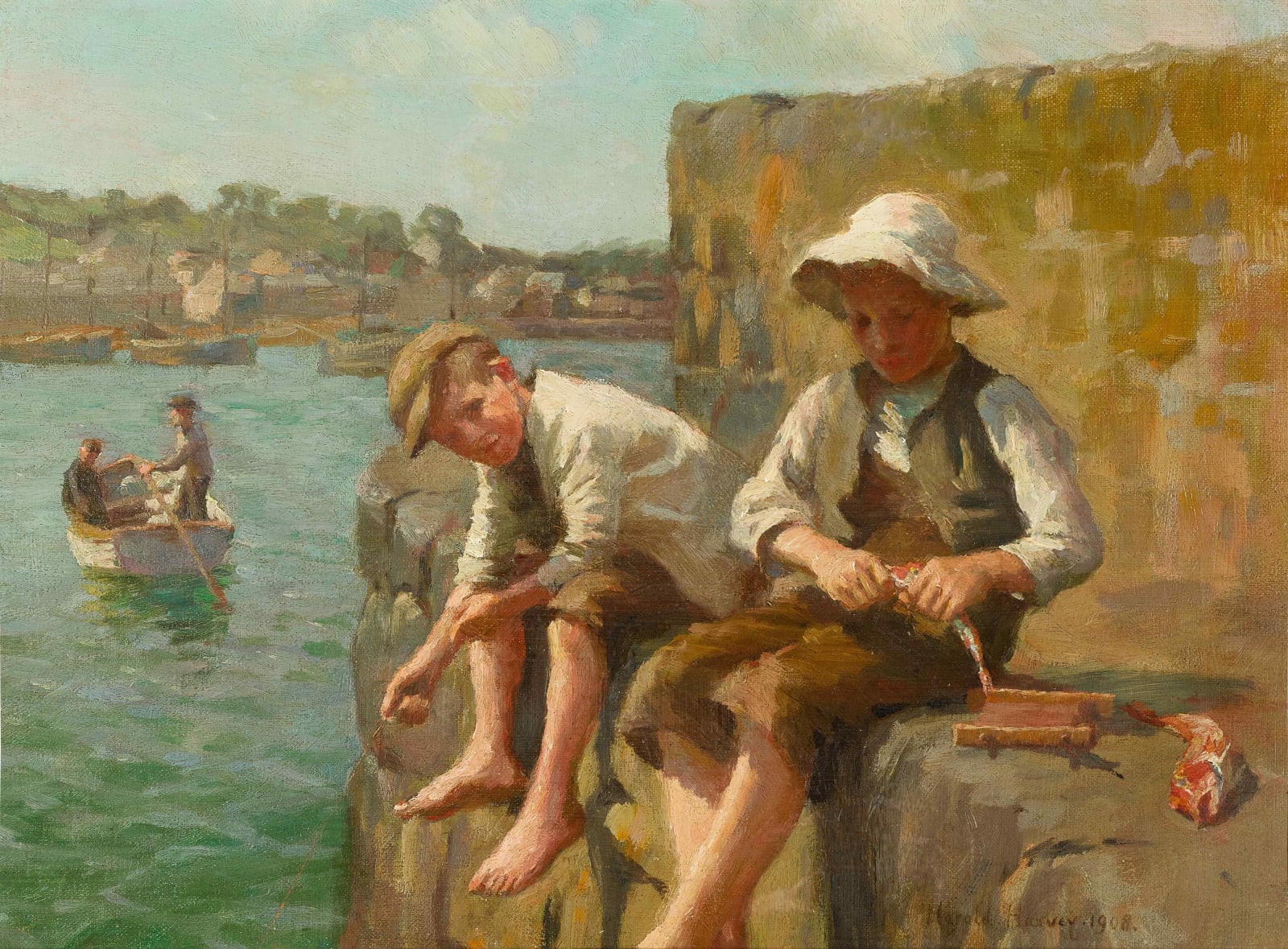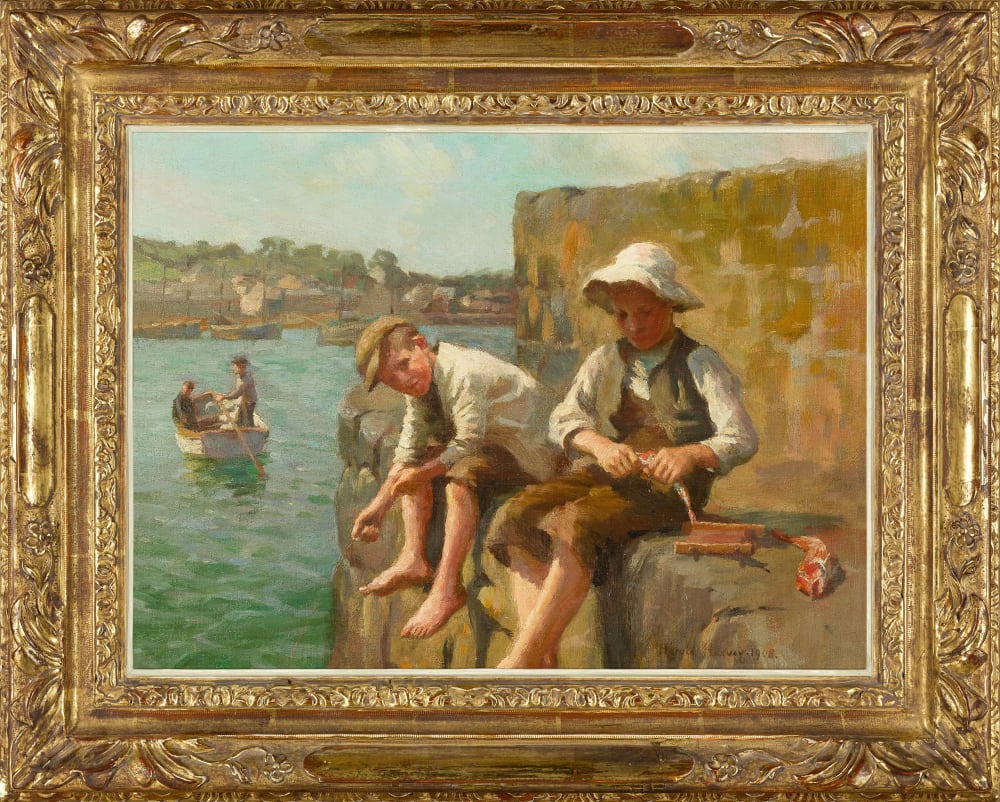Harold Harvey 1874-1941
Framed: 42 x 52cm (16 1/2 x 20 1/2 ins.)
Provenance
Christie's, London, 10 May 2001, lot 164Messum's, London 2009
Private UK Collection 2009 – 2022
Exhibitions
Messums. Paintings at the Studio 2009Publications
The Antiques Magazine, 26 May-1 June 2001, issue 877, illustratedHarold Harvey was one of the few, and certainly the most gifted, Newlyn artist born in Cornwall; the son of a Penzance bank manager. He was taught to paint and draw by Norman Garstin but like many of his Newlyn School contemporaries, he later studied in Paris ateliers; Académie Julian, 1894–96, Académie Colarossi and Académie Delecluse also in 1896.
Harold Harvey has the distinction amongst Newlyn artists of an evolving style, in fact one could argue he reinvented his art several times, keeping pace with the heady progress of contemporary art in the new century. One can trace this progress from its Newlyn beginnings in a relatively formal realism and subdued palette akin to that of Garstin and Forbes, to freer, looser brushwork and a more impressionistic and brighter output in the years approaching WW1 and then onto an early modern British look and feel, less encumbered by a faithful replication of reality and more akin to the work of Dod Procter and mature work of Harvey's friend and contemporary, Laura Knight. Catching Gunard, painted in 1908, is an early example of Harvey's more liberated, impressionistic works, brighter but still with a colour palette reminiscent of his Newlyn mentors.
Harvey loved fishing and painting in equal measure. Like his friends Laura and Harold Knight, many of Harvey’s finest works depict children and Catching Gurnard is a wonderful example of youthful endeavour and joie de vive under the western summer sun. The boys are catching Red Gurnard, once a thriving species in Cornish waters and a visual gift for the artist with its angular skeleton and bold red and white colouration. Similiar impressionistic works painted between 1906 and 1909, with what often appear to be the same models and even bucket hat, are A Crab Race, part of the Plymouth City Council collection at The Box, Young Sailors, sold at Christies New York in 2006, After the Swim, Boys on a Beach, Fishing for Bullcod and Tug of War. All these paintings capture the carefree pastimes of barefooted children under the western sun.
The setting of Catching Gurnard is likely to be the Old Quay at Newlyn – also the setting a year later of Three Fishermen (1909). The setting of our work has historically been attributed to Mousehole but having visited both locations our view, and that of Newlyn fishermen still working from Old Quay, is that the work is set at the end of the Newlyn's Old Quay looking across to the village as it was a century ago. The Old Quay is one of the oldest in the country, built in 1435 during the reign of Henry VI. The Mayflower stopped here on its way to America having discovered that the water brought aboard in Plymouth was rancid; hence this is the last stopping-off point before the ship made its historically momentous Atlantic crossing. In the late 19th century Newlyn Harbour was greatly extended and protected by 2 new piers; the North and South Piers. Today the shoreline has also been extended from the cottages depicted in Catching Gunard, into the harbour to accommodate the modern Newlyn Fish Market, its car park and the RNLI's Penlee Lifeboat Station. Nevertheless Old Quay still exists and remains a wonderful symbol of Newlyn's long and prevailing fishing and maritime industry.







